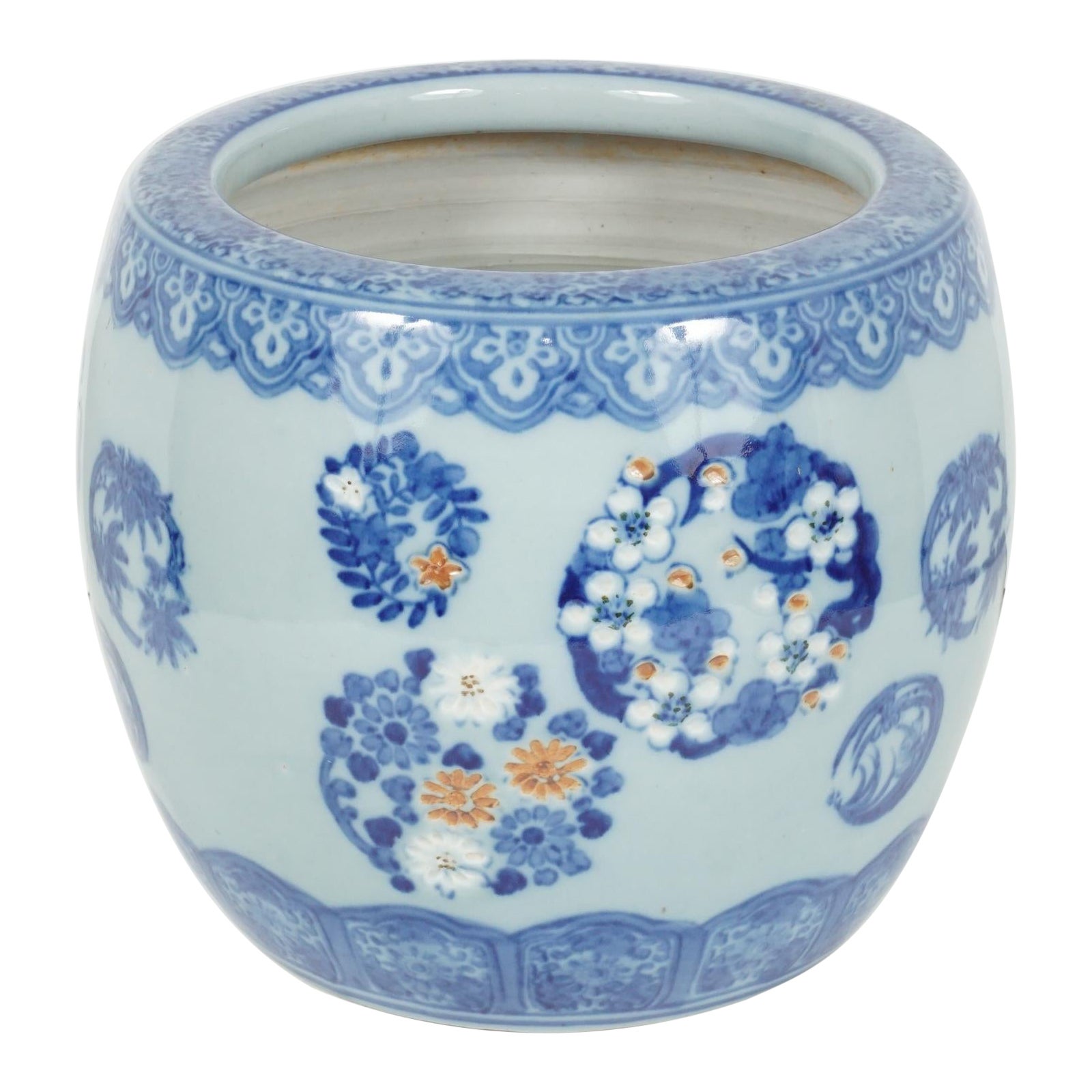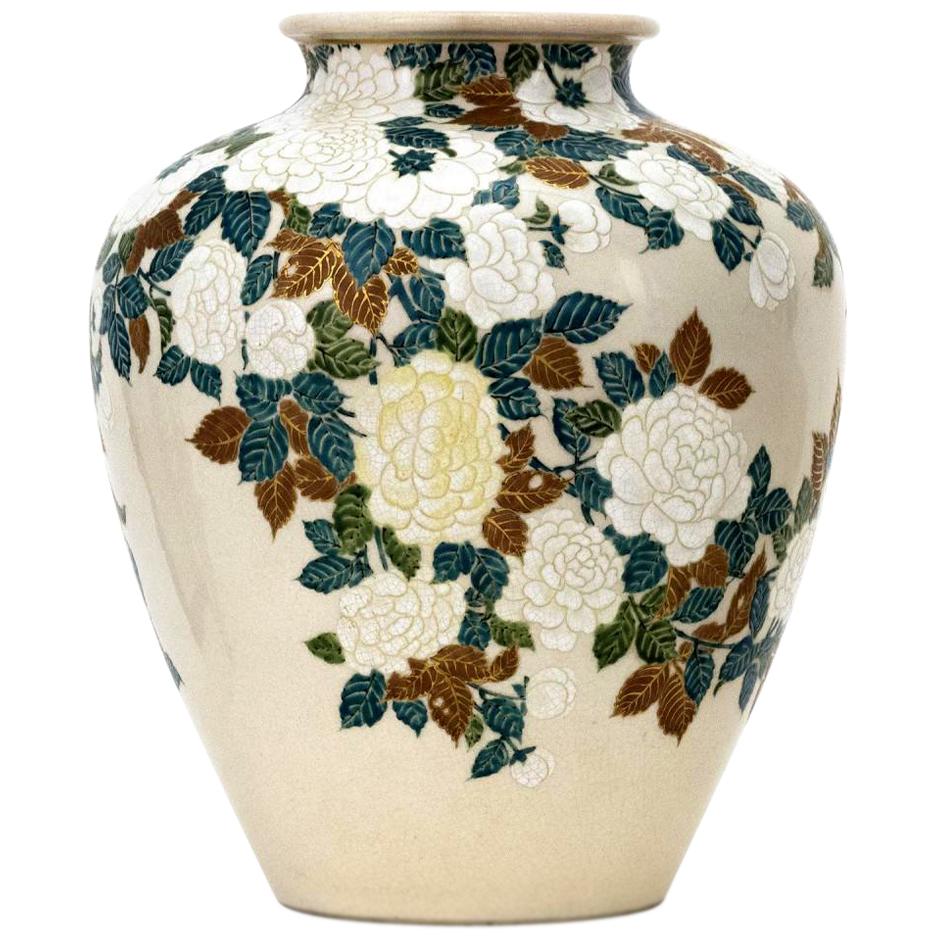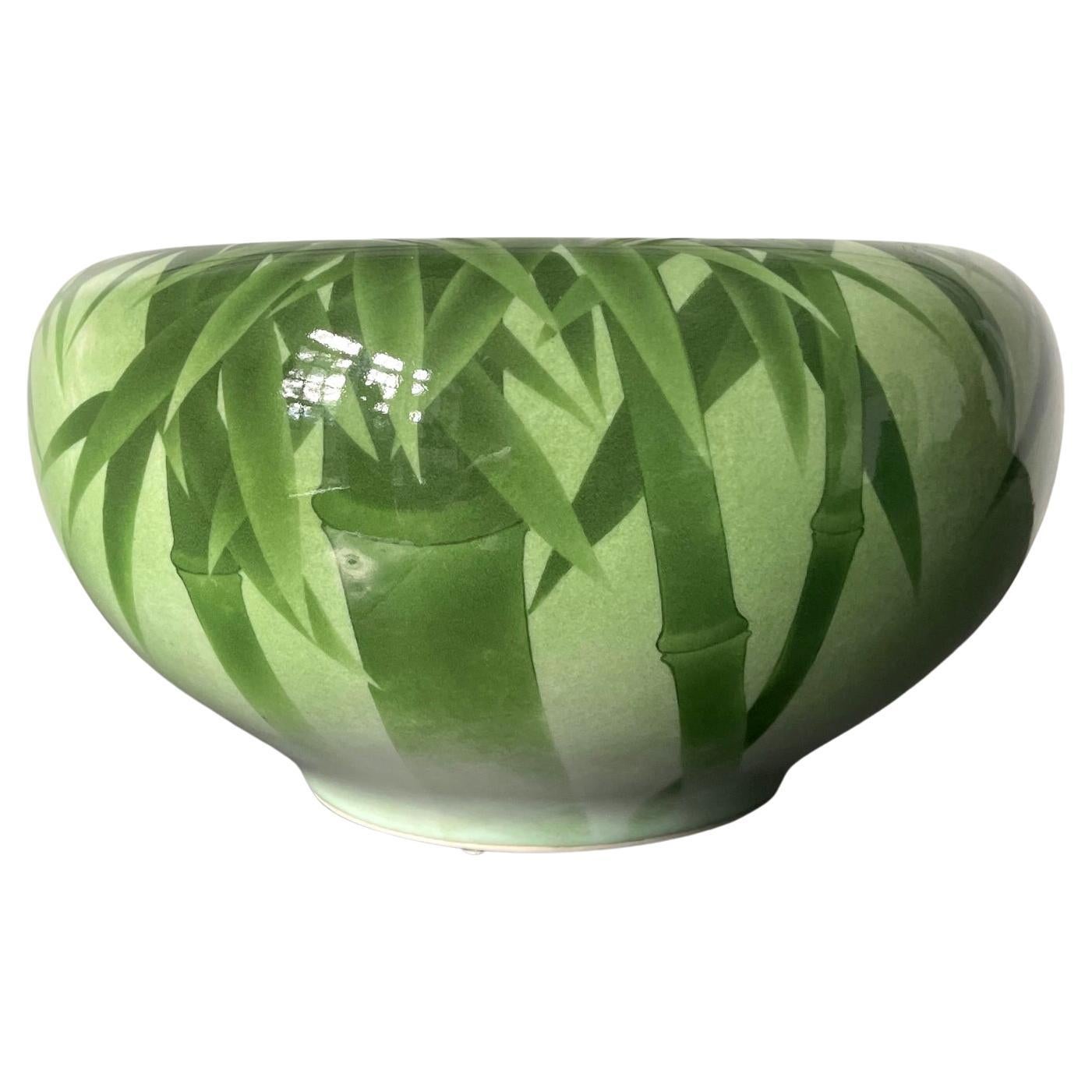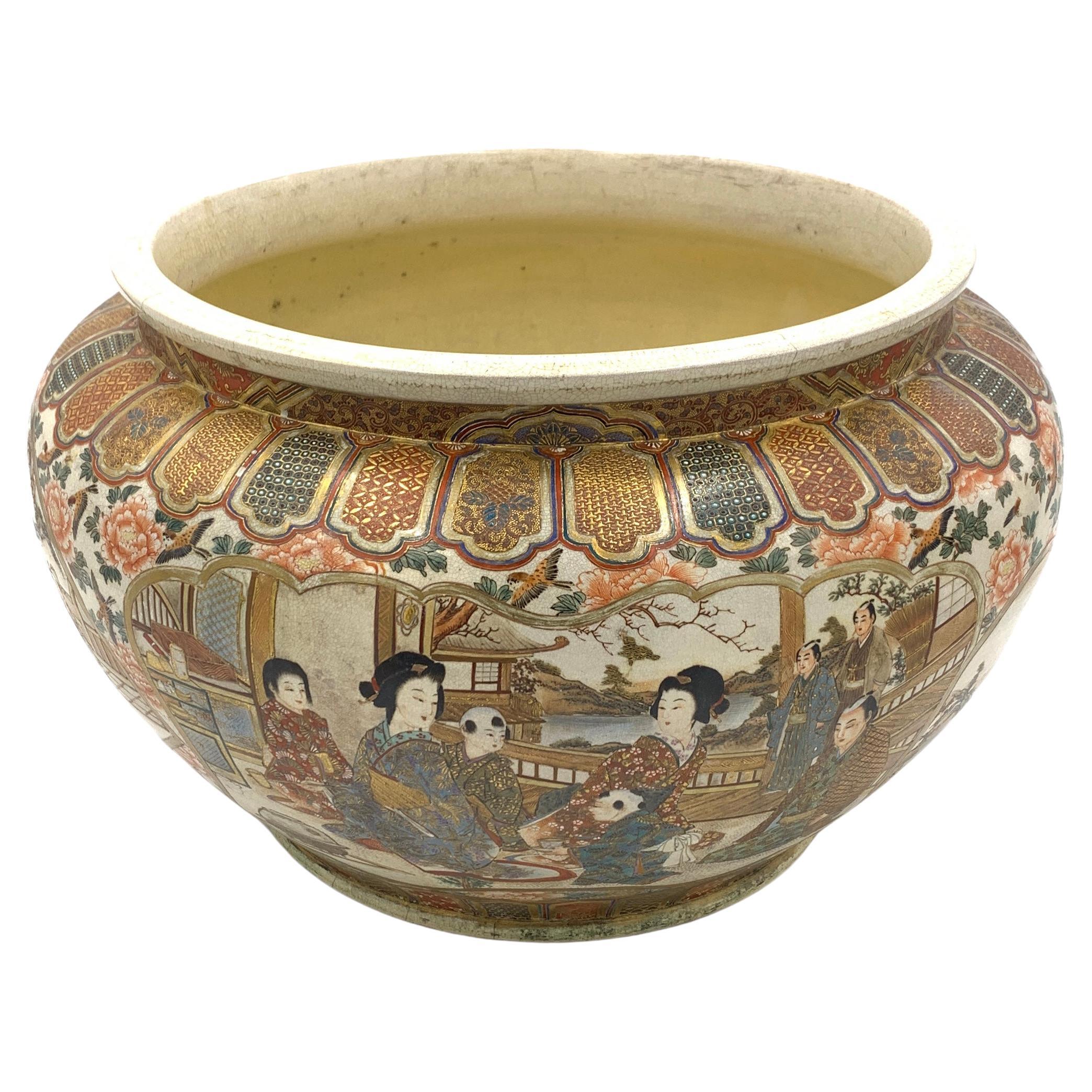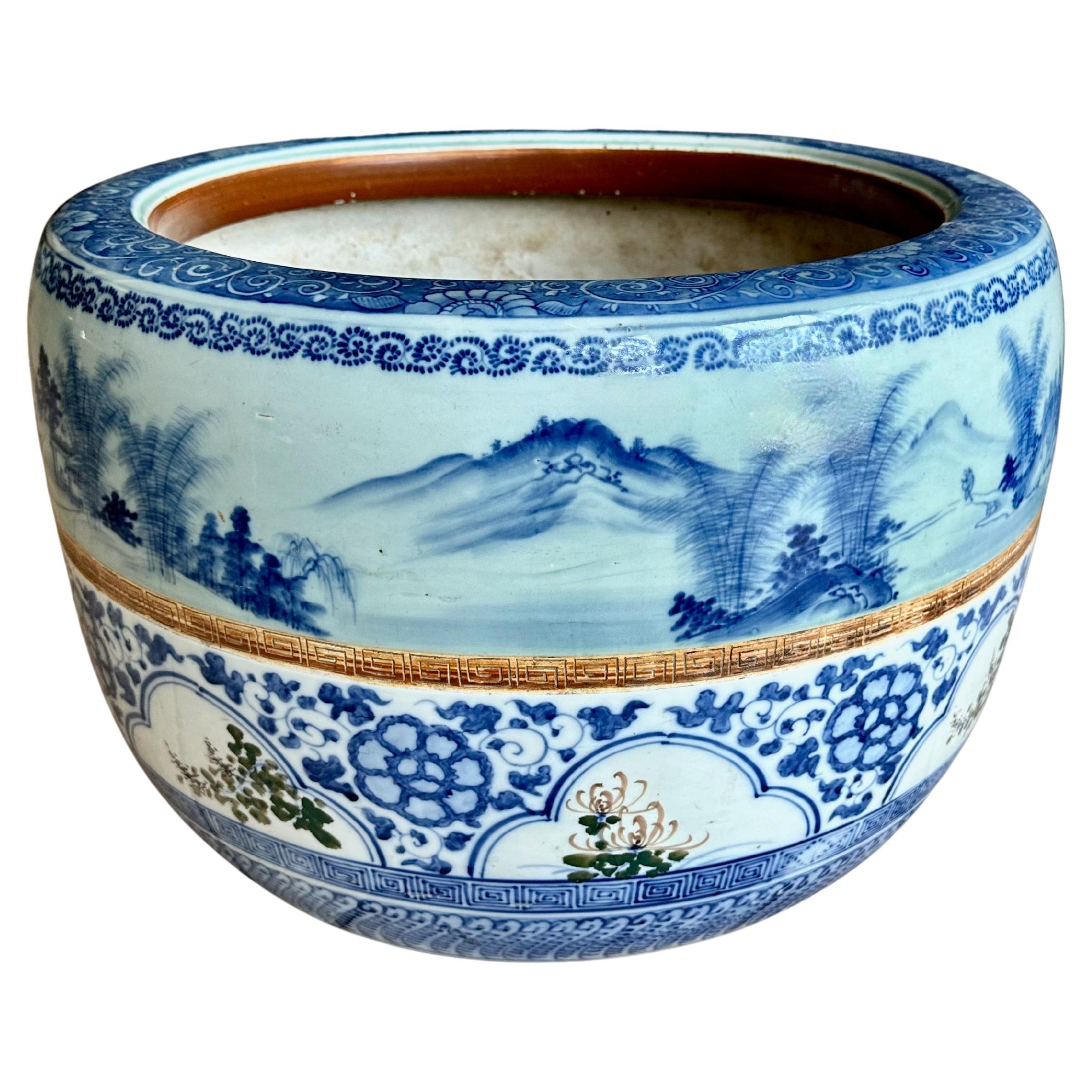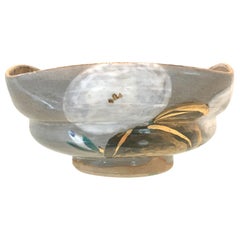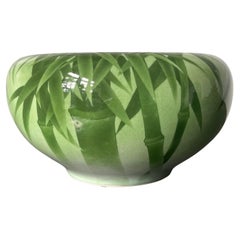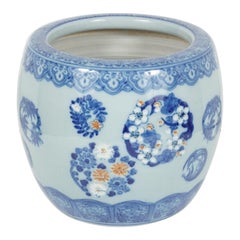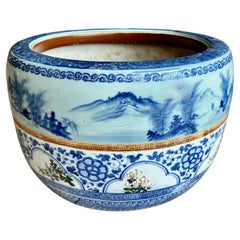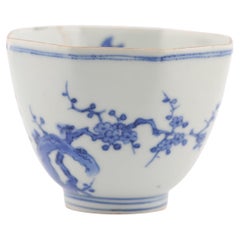Items Similar to Japanese Studio Ceramic Centerpiece Okumura Shozan Meiji Period
Want more images or videos?
Request additional images or videos from the seller
1 of 11
Japanese Studio Ceramic Centerpiece Okumura Shozan Meiji Period
$3,800
£2,905.30
€3,346.32
CA$5,324.97
A$5,944.82
CHF 3,115
MX$72,770.47
NOK 39,560.50
SEK 37,300.53
DKK 24,973.94
About the Item
A beautifully crafted large ceramic bowl as a centerpiece by Okumura Shozan (1842-1905) in the Kyo-yaki (kyoto ware) style. A Classic ovoid form with flatly inverted rim of swirled scroll pattern, the piece was decorated with naturalistic floral pattern with a lightly relief. The execution is precise with carved in silhouette outlines and expertly application of colors. Great attention was paid to the details of the flowers and leaves giving it an impression of woodblock print. Signed on the lower part as "Made by Okumura Shozan".
Okumura Shozan (1841-1905) is a Japanese potter from the end of the Edo to the Meiji period. Born in OMI in Shiga Prefecture, his birth name is Yataro. After working as a ceramic teacher of Kyo-yaki, he started working in Gojozaka, Kyoto, independently in 1890. He researched old glazing techniques and was renowned for recreating the works of earlier Edo artists such as Ninsei Nonomura and Ogata Kenzan. He won the award at the National Industry Expo for his works known as Shozan ware for their high quality.
Shozan was also known as a hand-on "studio artist" who involved himself in all the process of ceramic making, except for grinding and mixing of the clay.
- Creator:Okumura Shozan (Artist)
- Dimensions:Height: 7 in (17.78 cm)Diameter: 13.75 in (34.93 cm)
- Style:Japonisme (Of the Period)
- Materials and Techniques:
- Place of Origin:
- Period:
- Date of Manufacture:Late 19th Century-1906
- Condition:Repaired: There are three spots of touchup on the glaze. Wear consistent with age and use. Fine antique condition with only minor wear on the gilt in some spot. Under the black light, there are spotty touchups on the rim and body.
- Seller Location:Atlanta, GA
- Reference Number:1stDibs: LU945015881312
About the Seller
4.9
Platinum Seller
Premium sellers with a 4.7+ rating and 24-hour response times
Established in 2006
1stDibs seller since 2010
565 sales on 1stDibs
Typical response time: <1 hour
- ShippingRetrieving quote...Shipping from: Atlanta, GA
- Return Policy
Authenticity Guarantee
In the unlikely event there’s an issue with an item’s authenticity, contact us within 1 year for a full refund. DetailsMoney-Back Guarantee
If your item is not as described, is damaged in transit, or does not arrive, contact us within 7 days for a full refund. Details24-Hour Cancellation
You have a 24-hour grace period in which to reconsider your purchase, with no questions asked.Vetted Professional Sellers
Our world-class sellers must adhere to strict standards for service and quality, maintaining the integrity of our listings.Price-Match Guarantee
If you find that a seller listed the same item for a lower price elsewhere, we’ll match it.Trusted Global Delivery
Our best-in-class carrier network provides specialized shipping options worldwide, including custom delivery.More From This Seller
View AllJapanese Ceramic Vase by Ito Tozan I Meiji Period
By Ito Tozan I
Located in Atlanta, GA
This stoneware vase of a jar form was finely decorated with low relief carving and delicate colored glazes depicting bundles of peony flowers. It was made by Ito Tozan I (1846-1920) circa 1890-1900s in the late Meiji Period. The color pallet was both bold and subtle, with dark green and rusty leaves with golden outlines and white and light yellow peony petals covering much of the surface. Impressed with potter's mark on the base.
Examples of two pieces by Ito Tozan I were in the collection of MNAAG (Guimet) Paris. Inventory no. MG 13790 an 13792.
A vase with similar shape and decoration techniques is featured as Lot 1340 Fine Japanese Art, 13 Sep 2017 Bonhams New York
Tozan Ito I established his ceramic business in Kyoto 1867. His studio made both porcelain and stoneware in a style some considered Satsuma while they retained a sophistication of Kyoto ware...
Category
Antique 1890s Japanese Japonisme Ceramics
Materials
Ceramic
Japanese Ceramic Bowl Makuzu Kozan Utusushi Kenzan
By Makuzu Kozan
Located in Atlanta, GA
A rare ceramic bowl with overglaze paint decoration by Japanese imperial potter Makuzu Kozan ((1842–1916). Unlike the better-known works Kozan made for the expositions in the west and export to the foreign market, this piece exemplifies his work for the domestic market and the tea ceremony. The bowl was made in the so called "Utusushi" Ogata Kenzan (1663-1743), a celebrated Edo painter and ceramicist. Utusushi is loosely translated as "in the spirit of". It is not at all a simple imitation of a master, but a Japanese concept of embracing the spiritual essence of a master while the creator is free to mix in his or her own unique artistic interpretation and flavor.
The bowl was made to hold fruits during the tea ceremony. It has a very distinguished form with a circular lower body morphing into a square upper portion that further opening with flared rim. The surface has a grey glaze onto which Asagao flowers (Japanese morning glory) on the vines were painted in a free and poetic style. White was used for the petals, green for the leaves with touches of gold highlight. Asagao, the symbol of the summer was rendered in the spirit of Ogata Kenzan, and interestingly the shape of the blossom echoes the unique form the bowl. It was likely reserved for the tea ceremony during the summer months.
Under the base, Kozan was signed in black on a white porcelain plaque inlay.
For two similar examples of Kozan's work Utusushi Kenzan, see Page 168-169 of the book: Sekai ni Aisa Reta ya Kimono Miyagawa Kozan Makuzu...
Category
Antique Early 1900s Japanese Japonisme Ceramics
Materials
Ceramic
Japanese Ceramic Centerpiece Bowl Makuzu Kozan Meiji Period
By Makuzu Kozan
Located in Atlanta, GA
A beautiful ceramic vessel in the form of Bo, the so-called monk's alms bowl from the studio of Japanese Potter Makuzu Kozan, also known as Miyagawa Kozan (1842–1916), one of the most established and collected ceramist from Meiji Period. Born as Miyagawa Toranosuke, Kozan established his pottery studio in Yokohama circa 1870s and later became one of the appointed artists to the Japanese Imperial household. His work was exhibited in many international fairs that the Meiji government participated at the turn of the century and won many grand prizes.
Of a relatively large size, this piece was made as a decorative center piece for display. It was brilliantly decorated with underglaze paint of a green-on-green bamboo motif, using the novel technique developed by Kozan called Fuki-e (the blow painting). As a result, the bamboos appear took on a three-dimensional quality as if appearing in a mist. Known as one of the most creative ceramists, circa 1887, Kozan started experimenting with new chemical colors from the West in the format of his porcelain glaze. New colors allowed him to create underglaze design that appeared bright, smooth and glossy. To create design that is realistic and dimensional, more common in the western paintings, he was inspired by the native Japanese ink painting technique developed around 1900 by Yokoyama Taikan...
Category
Antique Early 1900s Japanese Japonisme Ceramics
Materials
Ceramic
Rare Japanese Ceramic Glazed Bowl Makuzu Kozan Meiji Period
By Makuzu Kozan
Located in Atlanta, GA
On offer is a rare ceramic bowl with overglazed design by the famed Japanese ceramic artist Makuzu Kozan (1842-1916), circa 1906-1916. The bowl is rather unusual from the potter's repertoire with its unique glaze colors and decoration, and it likely belonged to a small series that Kozan made in and after 1906. A bowl of similar glaze and nearly identical dragon motif was recorded as a diplomatic present to the British royalty Arthur Connaught (1883-1932) when he represented King Gorge V in Japan in 1906. Other pieces, such as this bowl, were likely made with similar materials and designs afterwards.
Essentially round in form, the bowl has a generous volume with six harmonious lobes. The bottom of the interior showcases a coiled dragon in red, green and gold slithering on a cobalt blue background. The roundel shares an echoing lobed perimeter, which is further outlined by red and turquois bands and rising sun design. The exterior of the bowl features six stylized Japanese camellias...
Category
Antique Early 1900s Japanese Japonisme Ceramics
Materials
Ceramic
Antique Japanese Ceramic Ko-Kutani Revival Footed Dish
Located in Atlanta, GA
A Japanese glazed ceramic footed dish made in the Ko-Kutani type of Edo period but likely during Kutani revival in the 19th century Meiji Period. The dish with delicate foliaged rim ...
Category
Antique 19th Century Japanese Japonisme Ceramics
Materials
Ceramic
One of The Two Japanese Ceramic Vases Makuzu Kozan Meiji Period
By Makuzu Kozan
Located in Atlanta, GA
Two small nearly identical ceramic vases by Japanese Meiji imperial potter Makuzu Kozan (1842-1916), circa 1890-1900s. The vases were made in the form of jarlet with swelled shoulder...
Category
Antique Late 19th Century Japanese Japonisme Ceramics
Materials
Ceramic
You May Also Like
Japanese Porcelain Hibachi of the Showa Period or Slightly Earlier.
Located in Hudson, NY
This porcelain Japanese hibachi or “Fire Bowl” was made in Japan circa 1900 to 1925. This is a traditional Japanese heating device and consists of a fireproof cylinder or box that ca...
Category
Early 20th Century Japanese Showa Ceramics
Materials
Porcelain
Large Japanese Satsuma Bowl, 19th Century
Located in London, GB
Meticulously enamelled and gilt with different scenes satsuma bowl.
Category
Antique Late 19th Century Japanese Ceramics
Materials
Porcelain
$3,265 Sale Price
20% Off
Large Japanese Arita Porcelain Hibachi Planter
Located in Palm Springs, CA
Very large and heavy hand painted blue and white porcelain Japanese Arita porcelain Hibachi used as a planter. Decorated with various symbols as well as mountains and flowers. Has a...
Category
Mid-20th Century Japanese Ceramics
Materials
Porcelain
Antique 1670-1700 Japanese Arita Kakiemon Unusual shaped Bowl Flowers Shibata
Located in Amsterdam, Noord Holland
Description
Very happy with this new arrival.
Octagonal Arita kakiemon bowl of unusual shape and design.
Period; 1670- 1680
Condition
1 small chip a...
Category
Antique 17th Century Edo Decorative Dishes and Vide-Poche
Materials
Porcelain
Antique Meiji Period Japanese Satsuma Cup or Incense Burner Choshuzan Workshop
Located in Amsterdam, Noord Holland
Satsuma Incense Burner
Additional information:
Material: Porcelain & Pottery
Japanese Style: Satsuma
Region of Origin: Japan
Period: 19th centu...
Category
Antique 19th Century Japanese Decorative Bowls
Materials
Porcelain
$1,118 Sale Price
20% Off
Meiji period Japanese Arita bowl, c. 1850-1900
Located in Kenilworth, IL
Imari palette shallow bowl decorated in Imari colors simulating the Chinese famille verte palette (green with accents of aubergine, oxide red and underglaze blue). The interior of th...
Category
Antique Mid-19th Century Japanese Meiji Decorative Bowls
Materials
Porcelain
More Ways To Browse
Large Ceramic Bowl
19th Century Japanese Ceramic
Edo Period Ceramics
Japanese Scroll Flower
Japanese Carved Flower
Ceramic Flower Relief
Japanese Meiji Bowl
Meiji Period Bowl
Meiji Woodblock
Japanese Floral Bowl
Edo Period Scroll
Japanese Edo Period Prints
Edo Period Bowl
Ogata Kenzan
Chinese Famille Rose Porcelain
Gold Imari
18th Century Japanese Art
Antique Ming Dynasty
